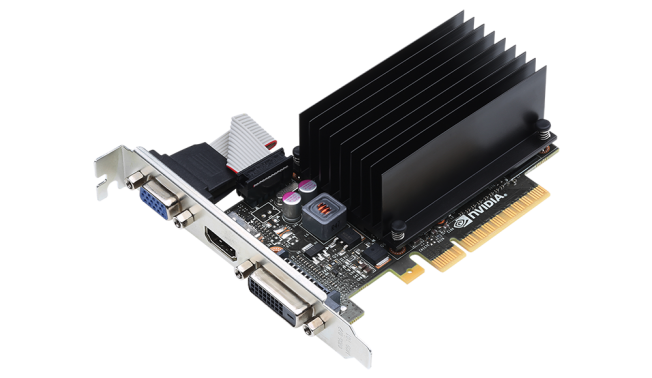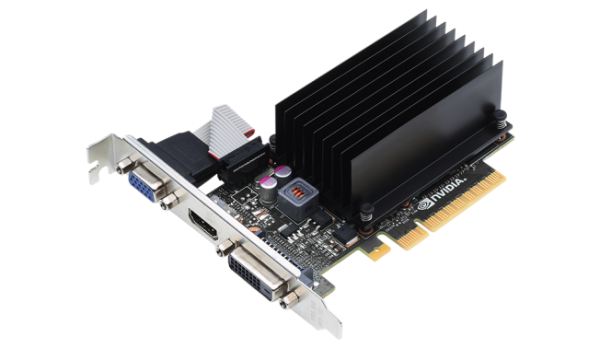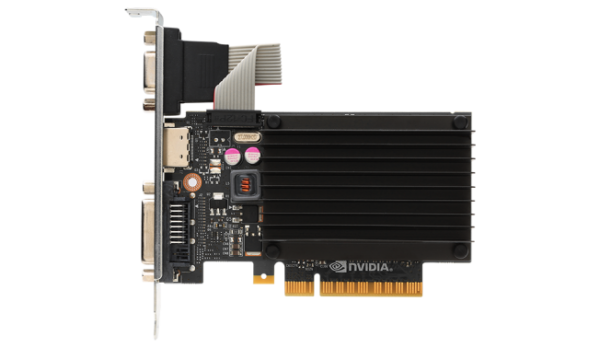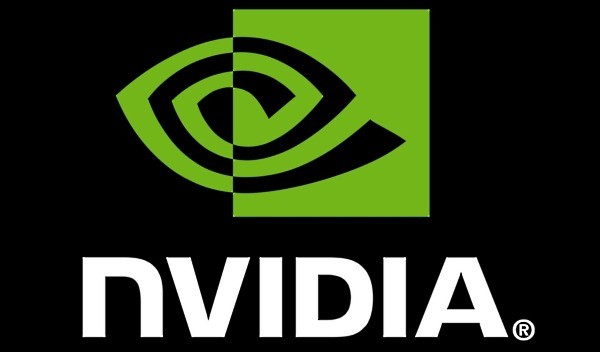Nvidia has quietly announced its latest graphics card called the GeForce GT 710. While not built using the highly anticipated Pascal architecture, the GT 710 is still an interesting choice for consumers that want an alternative to integrated GPUs.
Baring the GT abbreviation means that the GT 710 falls under Nvidia’s budget graphics cards lineup. However, the GT 710 does come with plenty of key Nvidia GeForce technologies such as PhysX, adaptive VSync, 3D Vision and CUDA. Nvidia claims this graphics card to be up to 10 times faster when compared against integrated GPUs.
Specification-wise, the GT 710 is built using the Kepler GK208 architecture that uses a 28nm process technology. The graphics card has a factory core clock of 954MHz and a memory bandwidth of 14.4GB/s. Obviously, a budget-oriented graphics card will consume less power compared to the more power hungry high-end ones. So is the case with the GT 710, which has a TDP of 19W.
Interestingly, even though the GT 710 is built using the already dated Keplar architecture, Nvidia has managed to include DirectX 12 support for the budget graphics card. This is a significant feature for consumers that are on a tight budget but doesn’t want to miss out on upcoming DirectX 12 features. In addition to that, Nvidia’s newest graphics card will be available in a 1GB or 2GB DDR3 variant.
What makes the GT 710 appealing to the low-end market is the fact that it retails for a price of US$30 (about RM125) for the 1GB version and US$40 (around RM170) for the 2GB variant. Currently, there are already various companies releasing their version of the GT 710, which includes EVGA, MSI, Zotac and Gigabyte.
More details about the GeForce GT 710 can be found on Nvidia’s official website.
(Source: Nvidia via WCCFtech , Hexus)
Follow us on Instagram, Facebook, Twitter or Telegram for more updates and breaking news.






